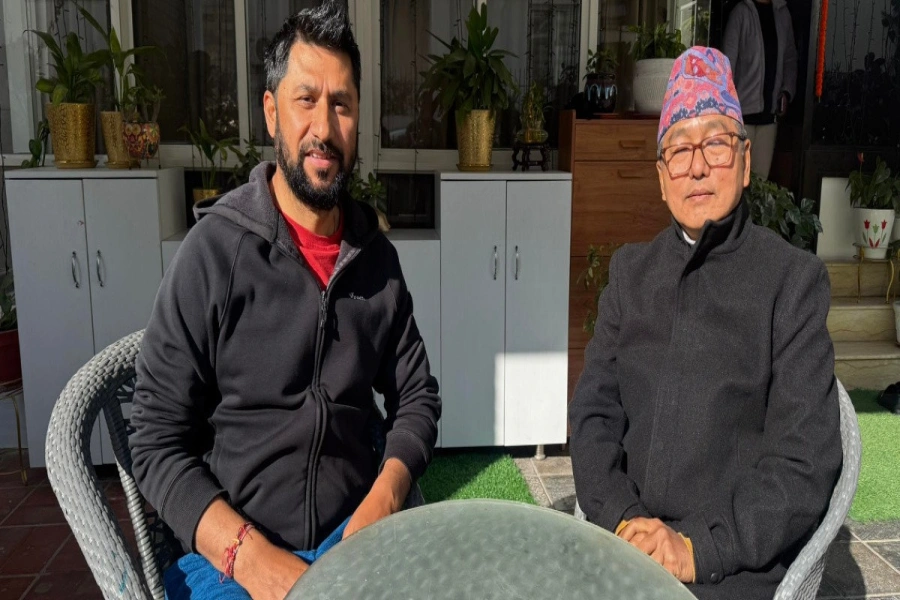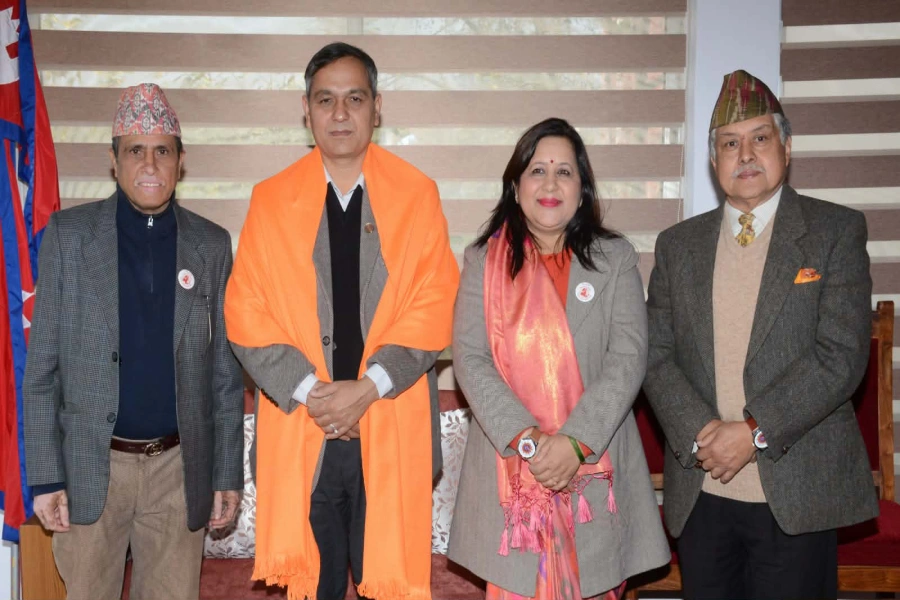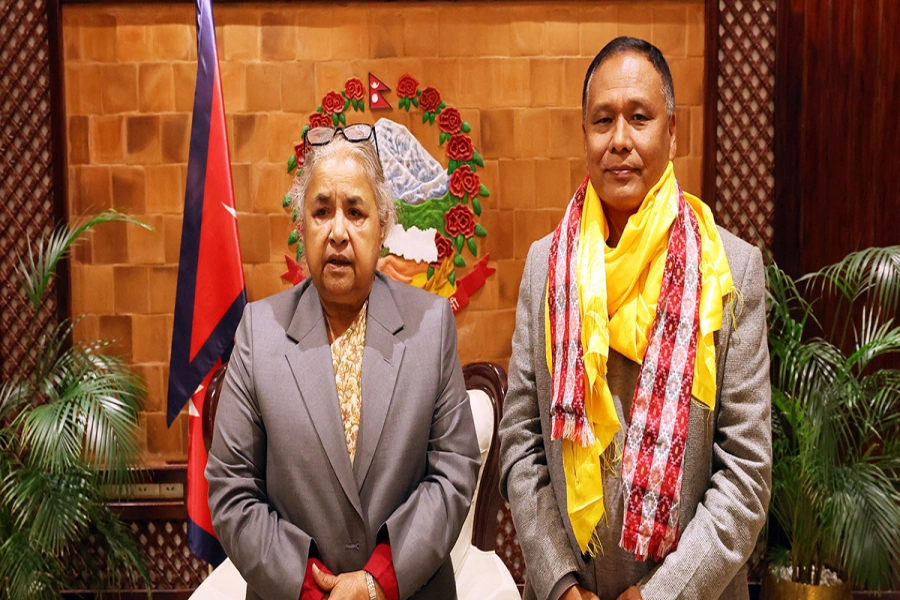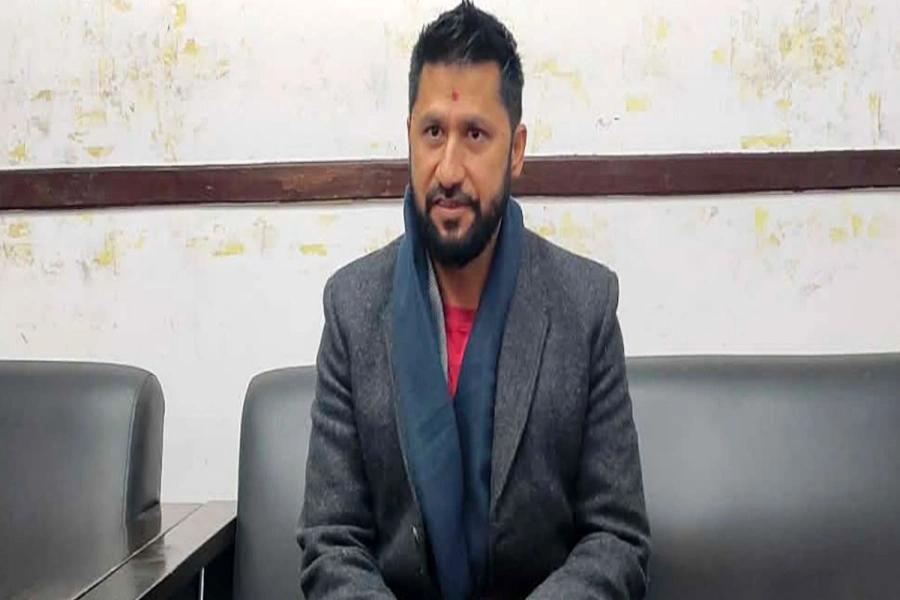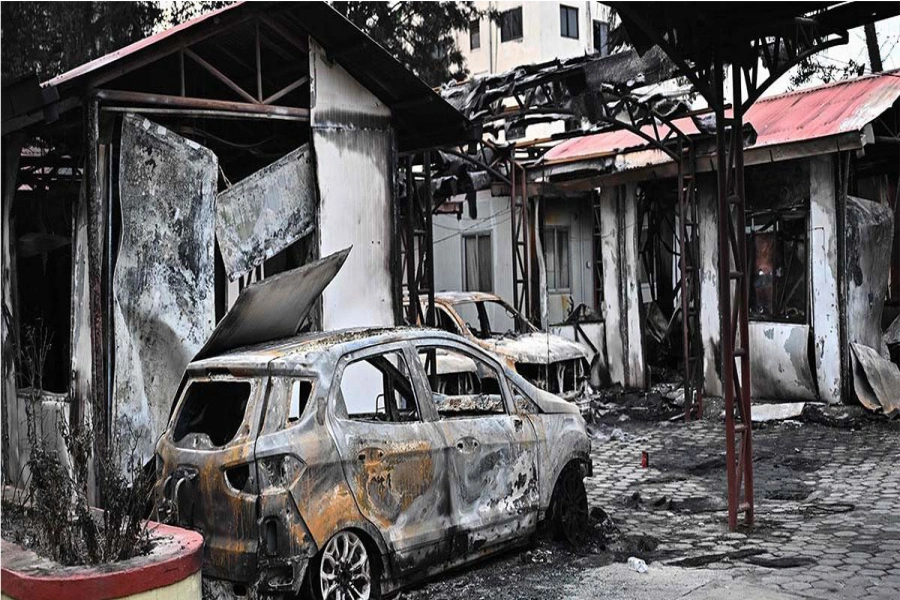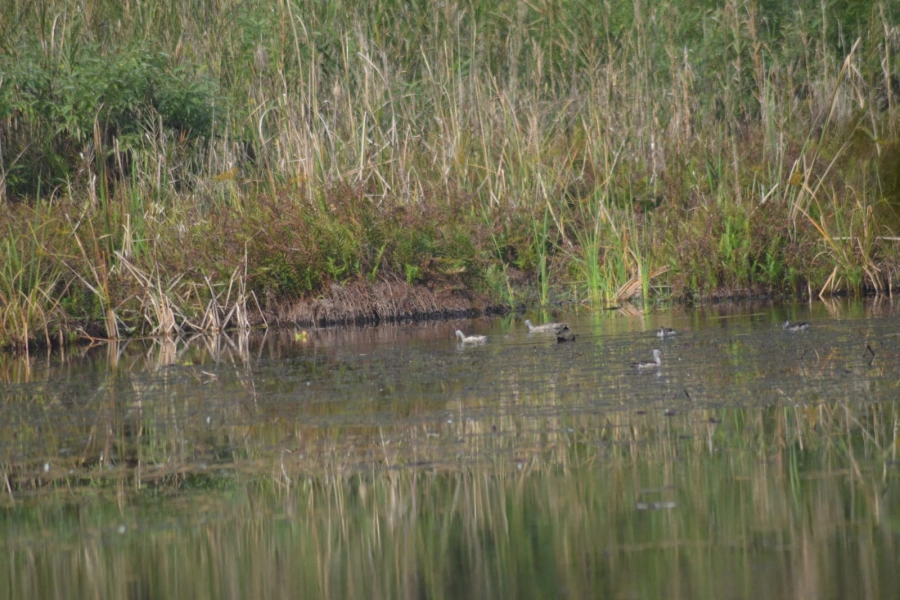Dancing to the tunes and hymns of musicians Rupkamal Chhetri, Dinesh Chhetri and Macharaja Maharjan, the trio presented the sacred dance form of Charya Nritya with splendor.[break]
Practiced from the sixth century, the dance is performed by the Newar community in Kathmandu personifying Hindu and Buddhist gods and goddesses.
Introducing the dance form, choreographer Rajendra Shrestha asked the audience not to clap in between the acts.
“Charya Nritya is the mother of all dance forms in South Asia,” said Shrestha, adding, “In other dance forms the performers bow to the audience but not so in this case.
The applauding is not required as the dancers take higher form transforming themselves into God and making the whole performance a sacred act.”
The first act to be presented was Sodasa Lasya, the 16 ritual offering dance. It was followed by the sequence of Arya Tara.

Meena Bajracharya, clad in a golden gown, presented the postures of the Buddhist goddess in all her fineness.
Next was the act of Ganesh. Mesmerizing as it was, the next performances were that of Manjushree and Vajra Yogini.
Ending the one hour enthralling performance was the act of Mahakala presented by Rajendra Shrestha.
Dressed in a blue gown and four faced mask, he transformed into the protector of Dharma.
His feet thumping on the wooden stage and hands upwards in the air, Shrestha danced with graceful gait and power.
After the performance, Dr Geeti Sen, director of Indian Cultural Centre thanked all the performers and gifted them khadi shawls.
“I’m speechless. I believe we are all very privileged to have witnessed this spectacular performance,” she said.
Sen also remembered Indian artist M F Hussain also referred to as India’s Picasso and a dear friend of her who passed away on June 9, 2011 “He was tall among artists and lived and loved well.”
Charya Nritya: Dancing for enlightenment



